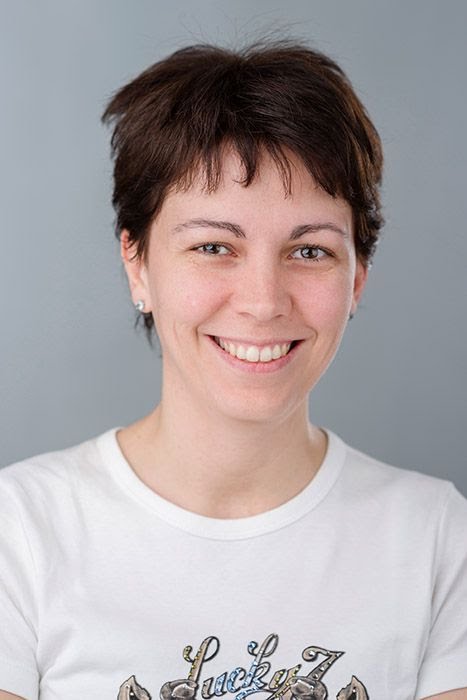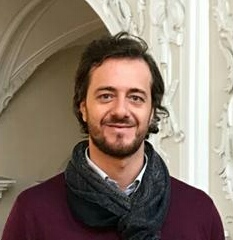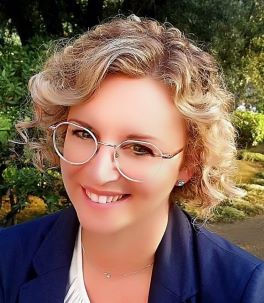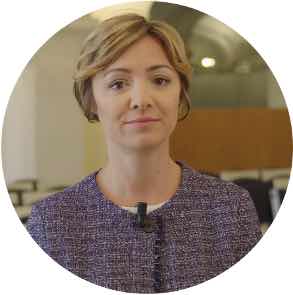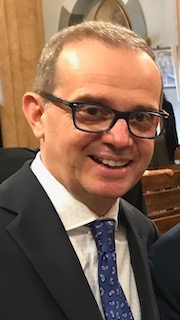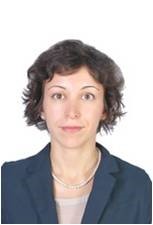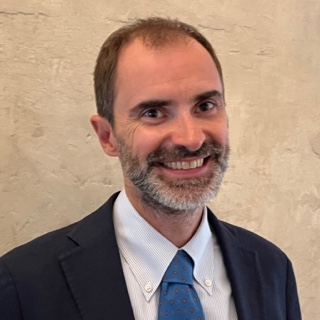Studying at the University of Verona
Here you can find information on the organisational aspects of the Programme, lecture timetables, learning activities and useful contact details for your time at the University, from enrolment to graduation.
Academic calendar
The academic calendar shows the deadlines and scheduled events that are relevant to students, teaching and technical-administrative staff of the University. Public holidays and University closures are also indicated. The academic year normally begins on 1 October each year and ends on 30 September of the following year.
Course calendar
The Academic Calendar sets out the degree programme lecture and exam timetables, as well as the relevant university closure dates..
| Period | From | To |
|---|---|---|
| Primo semestre (lauree) | Sep 25, 2023 | Jan 19, 2024 |
| Periodo generico | Oct 1, 2023 | May 31, 2024 |
| Secondo semestre (lauree) | Feb 26, 2024 | May 31, 2024 |
| Session | From | To |
|---|---|---|
| Sessione invernale (lauree) | Jan 22, 2024 | Feb 23, 2024 |
| Sessione estiva (lauree) | Jun 3, 2024 | Jul 12, 2024 |
| Sessione autunnale (lauree) | Aug 26, 2024 | Sep 20, 2024 |
| Session | From | To |
|---|---|---|
| Sessione autunnale a.a. 2022/2023 | Dec 5, 2023 | Dec 7, 2023 |
| Sessione invernale a.a. 2022/2023 | Apr 3, 2024 | Apr 5, 2024 |
| Sessione estiva a.a. 2023/2024 | Sep 4, 2024 | Sep 6, 2024 |
Exam calendar
Exam dates and rounds are managed by the relevant Economics Teaching and Student Services Unit.
To view all the exam sessions available, please use the Exam dashboard on ESSE3.
If you forgot your login details or have problems logging in, please contact the relevant IT HelpDesk, or check the login details recovery web page.
Should you have any doubts or questions, please check the Enrollment FAQs
Academic staff
 laura.chiaramonte@univr.it
laura.chiaramonte@univr.it
 stefano.gatti@univr.it
stefano.gatti@univr.it
Study Plan
The Study Plan includes all modules, teaching and learning activities that each student will need to undertake during their time at the University.
Please select your Study Plan based on your enrollment year.
1° Year
| Modules | Credits | TAF | SSD |
|---|
2° Year It will be activated in the A.Y. 2024/2025
| Modules | Credits | TAF | SSD |
|---|
3° Year It will be activated in the A.Y. 2025/2026
| Modules | Credits | TAF | SSD |
|---|
1 module between the following| Modules | Credits | TAF | SSD |
|---|
| Modules | Credits | TAF | SSD |
|---|
| Modules | Credits | TAF | SSD |
|---|
1 module between the following| Modules | Credits | TAF | SSD |
|---|
Legend | Type of training activity (TTA)
TAF (Type of Educational Activity) All courses and activities are classified into different types of educational activities, indicated by a letter.
Type D and Type F activities
Nei piani didattici di ciascun Corso di studio è previsto l’obbligo di conseguire un certo numero di crediti formativi mediante attività a scelta (chiamate anche "di tipologia D e F").
Oltre che in insegnamenti previsti nei piani didattici di altri corsi di studio e in certificazioni linguistiche o informatiche secondo quanto specificato nei regolamenti di ciascun corso, tali attività possono consistere anche in iniziative extracurriculari di contenuto vario, quali ad esempio la partecipazione a un seminario o a un ciclo di seminari, la frequenza di laboratori didattici, lo svolgimento di project work, stage aggiuntivo, eccetera.
Come per ogni altra attività a scelta, è necessario che anche queste non costituiscano un duplicato di conoscenze e competenze già acquisite dallo studente.
Quelle elencate in questa pagina sono le iniziative extracurriculari che sono state approvate dalla Commissione didattica e quindi consentono a chi vi partecipa l'acquisizione dei CFU specificati, alle condizioni riportate nelle pagine di dettaglio di ciascuna iniziativa.
Si ricorda in proposito che:
- tutte queste iniziative richiedono, per l'acquisizione dei relativi CFU, il superamento di una prova di verifica delle competenze acquisite, secondo le indicazioni contenute nella sezione "Modalità d'esame" della singola attività;
- lo studente è tenuto a inserire nel proprio piano degli studi l'attività prescelta e a iscriversi all'appello appositamente creato per la verbalizzazione, la cui data viene stabilita dal docente di riferimento e pubblicata nella sezione "Modalità d'esame" della singola attività.
Scopri i percorsi formativi promossi dal Teaching and learning centre dell'Ateneo, destinati agli studenti iscritti ai corsi di laurea, volti alla promozione delle competenze trasversali: https://talc.univr.it/it/competenze-trasversali
CONTAMINATION LAB
Il Contamination Lab Verona (CLab Verona) è un percorso esperienziale con moduli dedicati all'innovazione e alla cultura d'impresa che offre la possibilità di lavorare in team con studenti e studentesse di tutti i corsi di studio per risolvere sfide lanciate da aziende ed enti. Il percorso permette di ricevere 6 CFU in ambito D o F. Scopri le sfide: https://www.univr.it/clabverona
ATTENZIONE: Per essere ammessi a sostenere una qualsiasi attività didattica, incluse quelle a scelta, è necessario essere iscritti all'anno di corso in cui essa viene offerta. Si raccomanda, pertanto, ai laureandi delle sessioni di dicembre e aprile di NON svolgere attività extracurriculari del nuovo anno accademico, cui loro non risultano iscritti, essendo tali sessioni di laurea con validità riferita all'anno accademico precedente. Quindi, per attività svolte in un anno accademico cui non si è iscritti, non si potrà dar luogo a riconoscimento di CFU.
| years | Modules | TAF | Teacher |
|---|---|---|---|
| 1° 2° 3° | Thematic cycle of conferences on Women's "leadership": data, reflections and experiences | D |
Martina Menon
(Coordinator)
|
| 1° 2° 3° | English for Business and Economics - Bachelor's Degrees | D |
Marco Minozzo
(Coordinator)
|
| 1° 2° 3° | Il festival del Futuro - 2023/2024 | D |
Paola Signori
(Coordinator)
|
| 1° 2° 3° | Educational laboratory on credit securitization | D |
Michele De Mari
(Coordinator)
|
| years | Modules | TAF | Teacher |
|---|---|---|---|
| 1° 2° 3° | Data Analysis Laboratory with R (Verona) | D |
Marco Minozzo
(Coordinator)
|
| 1° 2° 3° | Data Visualization Laboratory | D |
Marco Minozzo
(Coordinator)
|
| 1° 2° 3° | Python Laboratory | D |
Marco Minozzo
(Coordinator)
|
| 1° 2° 3° | Data Science Laboratory with SAP | D |
Marco Minozzo
(Coordinator)
|
| 1° 2° 3° | Advanced Excel Laboratory (Verona) | D |
Marco Minozzo
(Coordinator)
|
| 1° 2° 3° | Excel Laboratory (Verona) | D |
Marco Minozzo
(Coordinator)
|
| 1° 2° 3° | Plan your future | D |
Paolo Roffia
(Coordinator)
|
| 1° 2° 3° | Plan your future | D |
Paolo Roffia
(Coordinator)
|
| 1° 2° 3° | Marketing plan | D |
Fabio Cassia
(Coordinator)
|
| 1° 2° 3° | Programming in Matlab | D |
Marco Minozzo
(Coordinator)
|
| 1° 2° 3° | Programming in SAS | D |
Marco Minozzo
(Coordinator)
|
| years | Modules | TAF | Teacher |
|---|---|---|---|
| 1° 2° 3° | The accountant as a business consultant | D |
Riccardo Stacchezzini
(Coordinator)
|
Statistics (2024/2025)
Teaching code
4S00121
Teacher
Coordinator
Credits
9
Language
Italian
Scientific Disciplinary Sector (SSD)
SECS-S/01 - STATISTICS
Period
Primo semestre L dal Sep 23, 2024 al Jan 10, 2025.
Courses Single
Authorized
Learning objectives
The course aims to provide the basic techniques of descriptive statistics, probability calculus and statistical inference for undergraduate students in business and economic sciences, who have acquired the necessary preliminary mathematical notions. Overall, these techniques provide the necessary toolkit for the quantitative analysis of processes related to the observation of collective phenomena. From a practical point of view, these techniques are necessary for descriptive, interpretative and decision-making purposes for conducting statistical surveys related to economic and social phenomena. In addition to providing the necessary mathematical statistics apparatus, the course aims at providing conceptual tools for a critical evaluation of the methodologies considered. At the end of the lessons, the student must be able to use the tools learned to conduct statistical analyses relating to economic and social phenomena.
Prerequisites and basic notions
Basic notions of mathematics (including limits, derivatives, integrals).
Program
1) Descriptive statistics
• Introductory concepts, population and sample, qualitative and quantitative characters
• Types of statistical data, statistical distributions (simple, double, unitary, frequency), graphical representations, histogram
• Cumulative frequencies, step or continuous distribution function
• Location indexes: arithmetic mean, harmonic mean, geometric mean, median, quartiles, deciles, percentiles and quantiles, mode
• Variability indexes: range, interquartile range, simple mean deviations, standard deviation and variance; variance of a linear transformation, standardization; relative indexes of variability: the coefficient of variation
• Indexes of asymmetry and kurtosis
• Double, unitary and frequency distributions; arithmetic mean of the sum of several variables and of the product of two variables; covariance and variance of the sum of several variables; conditional distributions; independence and chi-square dependence index
• Statistical interpolation: least squares method and least squares line, linear correlation coefficient and coefficient of determination R^2; total, explained and residual deviance
2) Probability
• Random experiments, sample space, tree diagrams, random events and operations between events, elements of combinatorial calculus
• Algebras and sigma-algebras, probability spaces, axiomatic definition of probability and its interpretations
• Conditional probability, product law, stochastic independence between events, total probability formula and Bayes' theorem
• Discrete and continuous random variables, distribution function, transformations of random variables, expected value and variance
• Notable discrete distributions: uniform, Bernoulli, binomial
• Notable continuous distributions: uniform and normal
• Discrete double random variables: joint probability distribution, marginal and conditional probability distributions, independence between random variables, covariance, Bravais correlation coefficient
• Linear combinations of random variables, sample mean of independent random variables, sum of independent normal random variables
• (Weak) law of large numbers, Bernoulli's law of large numbers for relative frequencies, central limit theorem
3) Inferential statistics
• Probabilistic samples, sample mean, sample relative frequency, sample variance, chi-squared sample distributions, Student's t
• Point estimate, correctness, efficiency and consistency of the estimators; estimation of mean, proportion, variance
• Interval estimate (confidence interval) for mean, proportion (large samples), variance
• Hypothesis tests: observed power and significance level, one-tailed and two-tailed tests for the mean, for the proportion (large samples) and for the variance; comparison between two means
Bibliography
Didactic methods
The course includes 84 hours of lessons, including lectures and exercise sessions. All lectures and exercise sessions are essential for an adequate understanding of the topics covered, as well as individual study. During the course, for each specific topic, the parts of the textbook to be studied are indicated. In addition to the scheduled course hours, several hours of tutoring are also provided as further training support.
All lectures and exercise sessions are held in person. It is advisable to attend the lessons and exercise sessions, taking notes regularly. All the teaching material related to the course (lecture notes, exercises, past exam assignments etc.) is published on the University's E-learning platform (Moodle).
Learning assessment procedures
The final exam is written and consists of three exercises with open questions, both theoretical and practical, on the topics covered in the course. It is allowed to consult a formulary written on a double-sided A4 sheet and the statistical tables, as well as the use of a scientific calculator.
An midterm test is scheduled in November, on about half of the course program. The result, if passed, is added to that of the second partial test taking place with the first exam of the winter session. In each partial test, the exam may include multiple choice questions and the formulary must be prepared on only one A4 side.
Evaluation criteria
Rather than assessing the correctness of the individual numerical results, in the correction of the test primary importance is given to their statistical interpretation within the problem and to the solution of the proposed exercises. Justifying every answer and commenting on the adopted procedures is therefore strongly recommended.
Criteria for the composition of the final grade
The final mark coincides with the score in the final exam, or with the sum of the two partial scores (if both are above a minimum threshold).
Exam language
Italiano
Career prospects
Module/Programme news
News for students
There you will find information, resources and services useful during your time at the University (Student’s exam record, your study plan on ESSE3, Distance Learning courses, university email account, office forms, administrative procedures, etc.). You can log into MyUnivr with your GIA login details: only in this way will you be able to receive notification of all the notices from your teachers and your secretariat via email and also via the Univr app.
Graduation
Student mentoring
Gestione carriere
Linguistic training CLA
Internships
Student login and resources
Modalità di erogazione della didattica
Le lezioni di tutti gli insegnamenti del corso di studio, così come le relative prove d’esame, si svolgono in presenza.
Peraltro, come ulteriore servizio agli studenti, è altresì previsto che tali lezioni siano registrate e che le registrazioni vengano messe a disposizione sui relativi moodle degli insegnamenti, salvo diversa comunicazione del singolo docente.

 045 8028 508
045 8028 508



